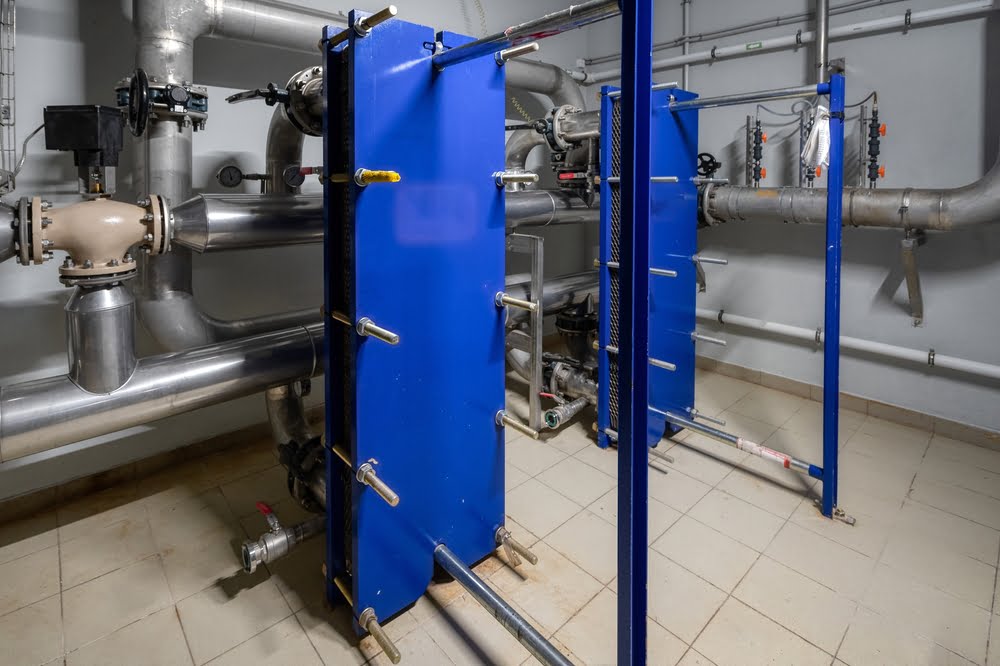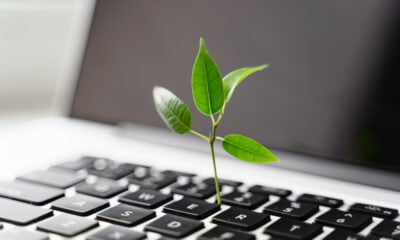

Energy
Why Brazed Plate Heat Exchangers Are Eco-Friendly
Businesses are under growing pressure to protect the planet. One survey found that 63% of consumers feel companies should be motivated to operate in an ethical and environmentally sustainable way.
Therefore, it should not be a surprise that many companies are looking for ideas to be eco-friendlier. Goals and initiatives for companies have changed over time, but some remain the same. Companies aim to reduce costs, increase production, and provide high-quality products or services. Recently, they’ve also focused on socially and environmentally conscious goals, such as implementing eco-friendly processes and technologies.
Electrical cooling is an important area to reduce a company’s environmental impact. Heat exchangers can help streamline electrical thermal management using eco-friendly heat transfer processes.
How do heat exchangers work and why are they eco-friendly?
One of the most important things we can do to be more sustainable is to make heat exchange processes more efficient. This involves using eco-friendly heat exchange plates.
A compact and effective device that transfers heat between two fluids is a brazed plate heat exchanger. It is made up of several thin plates that have been brazed together to form a stack, forming a network of channels for the two fluids to pass through. The channels’ layout produces turbulence, which accelerates the rate of heat transmission.
The purpose of a brazed plate heat exchanger is to efficiently transfer energy from one fluid to another without allowing them to mix. This is accomplished by separating the fluids from the plates while allowing them to be in close proximity, enabling heat to transfer from the hotter fluid to the cooler one. These heat exchangers are commonly used in industrial processes, HVAC systems, and commercial and residential settings to heat water for showers and other household uses.
There are a number of reasons that heat exchangers are eco-friendly:
- Heat exchangers utilize natural processes when transferring heat from one medium to another. The biggest benefit is that they transfer that has already been wasted, rather than using new methods to generate new heat that would leave a larger carbon footprint.
- The cooling fluids used for eco-friendly. They tend to use water and other safe, environmentally friendly fluids rather than radiator fluids.
- Companies are able to re-purpose waste heat, which reduces the carbon footprint relative to the lifetime value of the energy produced with it.
A growing number of companies are likely to take advantage of heat exchangers in an effort to lower their carbon footprint. In fact, entire heat exchanger manufacturers are branding themselves around their commitment to sustainability, as this press release from last month shows.
How does a brazed plate heat exchanger work?
It is a machine that helps transfer heat from one place to another. It is made up of thin plates with very small spaces between them. Fluid flows through the spaces, and the heat moves from one fluid to another, cooling or heating them both.
The plates are made of two different types of metal. One side is designed to transfer heat, while the other is designed to resist corrosion and erosion easily. The plates are placed in an alternating pattern and then sealed with a brazing material. This creates a strong bond between the two metals, forming a tight barrier and preventing leakage.
The heat exchanger is connected to two separate sources of liquid, which flow through the plates in opposite directions, allowing the heat to move from one fluid to the other. As the fluids pass over the plates, they pick up and exchange thermal energy so that both fluids reach their desired temperatures. The temperature of each fluid can then be regulated by adjusting the flow rate.
The BPHE is an efficient and reliable way to transfer heat between two fluids. It is a popular choice for many industries, including cooling systems, heating systems, water treatment facilities, and food production. It is also easy to install and maintain, making it ideal for commercial use. With its ability to effectively transfer heat, it is a great choice for businesses that need an efficient and reliable way of transferring thermal energy.
Benefits of using a brazed plate heat exchanger
The benefits of using this type of exchanger include the following:
- High thermal efficiency with low-pressure drops helps reduce energy costs.
- Compact design that takes up less space than other heat exchangers.
- Low maintenance and long service life due to its robust construction and lack of moving parts.
- Ability to handle high temperatures and pressures without additional components or expensive materials.
- Ability to handle a variety of fluids and applications.
- Low initial cost – they are typically less expensive than other heat exchangers.
Brazed plate heat exchangers offer an efficient and reliable solution for applications requiring high performance and low maintenance costs. For these reasons, they are becoming an increasingly popular choice in various industries.
Different types of brazing materials
They are efficient heat transfer systems commonly used in HVAC, refrigeration, and process industries. These heat exchangers comprise a series of stainless steel plates brazed with different brazing materials to form a compact unit.
The brazing materials used in this machine include copper, nickel, silver, and various alloys. Copper is widely used as a brazing material because of its high thermal conductivity and excellent bonding strength with stainless steel. Nickel is another popular choice for brazing materials because of its high temperature and corrosion resistance.
Silver brazing is also commonly used in brazed plate heat exchangers because it offers better strength than copper or nickel brazing. However, silver brazing is more expensive than other brazing materials and requires skilled labor to apply properly.
Various alloys, including brass, bronze, and stainless steel, can be used as brazing materials. Brass brazing is popular because it offers good strength and corrosion resistance, while bronze brazing is known for its high-temperature resistance. Stainless steel brazing is used in applications where high corrosion resistance is required.
The installation process for a brazed plate heat exchanger
Installing a BPHE can be simple. Here are the steps to follow:
- Select the right size and type of BPHE based on the application requirements, including the flow rate, temperature, pressure, and fluid type.
- Ensure that the inlet and outlet ports of the BPHE match the piping system, and provide enough clearance for maintenance and inspection.
- Prepare the piping system by cleaning the pipes, removing debris or contaminants, and testing the pressure and flow rate.
- Install the BPHE in a suitable location, such as a wall, bracket, or floor mount. Use the proper tools and hardware, such as bolts, screws, washers, and gaskets, to secure the BPHE in place.
- Connect the piping system to the BPHE using brazing, welding, or mechanical connections, such as flanges, unions, or clamps. Follow the BPHE manufacturer’s instructions and guidelines for the specific assembly method.
- Test the BPHE for leaks by pressurizing the system and visually inspecting for any signs of fluid escaping from the BPHE or the piping connections.
- Adjust the system’s flow rate, temperature, or pressure if necessary to optimize the BPHE performance and efficiency. This purpose uses monitoring and control devices like sensors, gauges, and valves.
- Finally, commission the BPHE by verifying that it meets the design specifications and performance criteria and documenting the installation and testing results for future reference.
Installing a BPHE requires attention to detail, safety, and quality to ensure that it functions as intended and provides the desired benefits, such as energy savings, space efficiency, and durability. Hiring a qualified and experienced installer or engineer who can offer advice and support throughout the installation process is recommended.






























